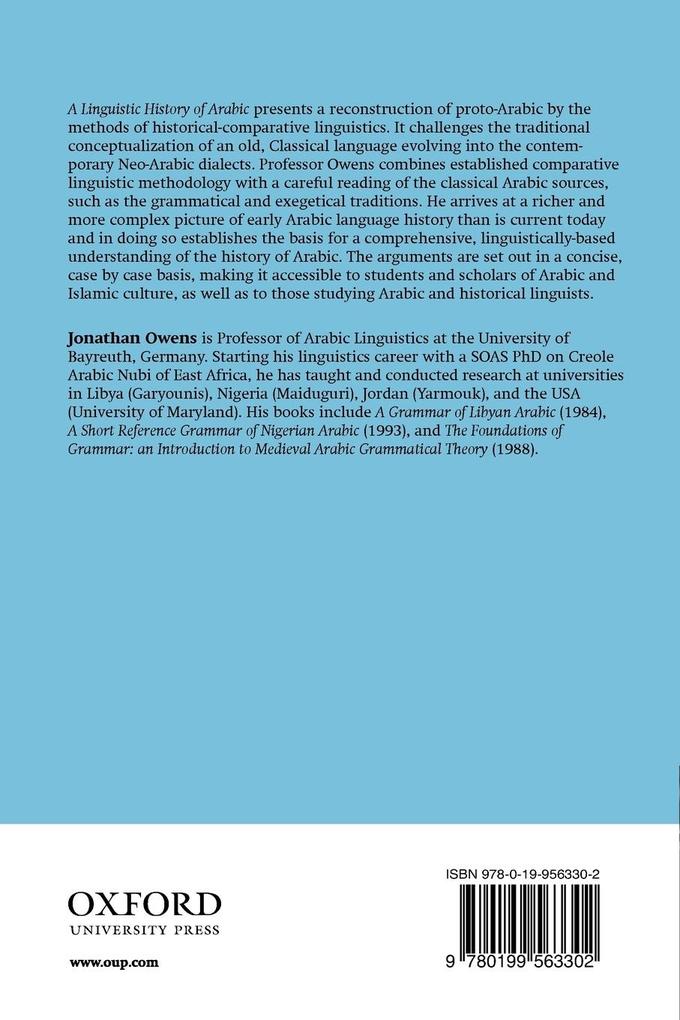
Zustellung: Do, 12.06. - Mo, 16.06.
Versand in 6 Tagen
VersandkostenfreiBestellen & in Filiale abholen:
A Linguistic History of Arabic challenges the traditional accounts of the progression of classical Arabic to contemporary dialects. It presents a rich and complex picture of early Arabic language history and establishes the basis for a comprehensive, linguistically-based understanding of the history of Arabic.
A Linguistic History of Arabic presents a reconstruction of proto-Arabic by the methods of historical-comparative linguistics. It challenges the traditional conceptualization of an old, Classical language evolving into the contemporary Neo-Arabic dialects. Professor Owens combines established comparative linguistic methodology with a careful reading of the classical Arabic sources, such as the grammatical and exegetical traditions. He arrives at a richer and more complex picture of early Arabic language history than is current today and in doing so establishes the basis for a comprehensive, linguistically-based understanding of the history of Arabic. The arguments are set out in a concise, case by case basis, making it accessible to students and scholars of Arabic and Islamic culture, as well as to those studying Arabic and historical linguists.
Inhaltsverzeichnis
- 1: Introduction: A Language and its Secrets
- 2: Old Arabic, Neo-Arabic, and Comparative Linguistics
- 3: Case and Proto Arabic
- 4: Al-Idgham al-Kabiyr and Case Endings
- 5: Pre-Diasporic Arabic in the Diaspora: A Statistical Approach to Arabic Language History
- 6: Nigerian Arabic and Reconstruction of the Imperfect Verb
- 7: Imala
- 8: Suffix Pronouns and Reconstruction
- 9: Summary and Epilogue
- Appendix
- References
- Index
Produktdetails
Erscheinungsdatum
11. Juni 2009
Sprache
englisch
Seitenanzahl
330
Autor/Autorin
Jonathan Owens
Verlag/Hersteller
Produktart
kartoniert
Gewicht
503 g
Größe (L/B/H)
234/156/18 mm
ISBN
9780199563302
Entdecken Sie mehr
Pressestimmen
. . . highly stimulating read for anyone with interest in the history of Arabic. . . It deserves a warm welcome. Clive Holes SOAS
Bewertungen
0 Bewertungen
Es wurden noch keine Bewertungen abgegeben. Schreiben Sie die erste Bewertung zu "A Linguistic History of Arabic" und helfen Sie damit anderen bei der Kaufentscheidung.










